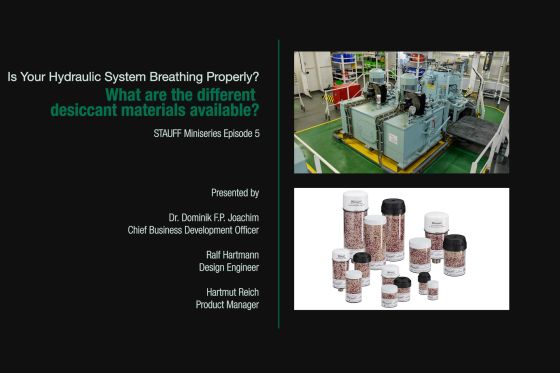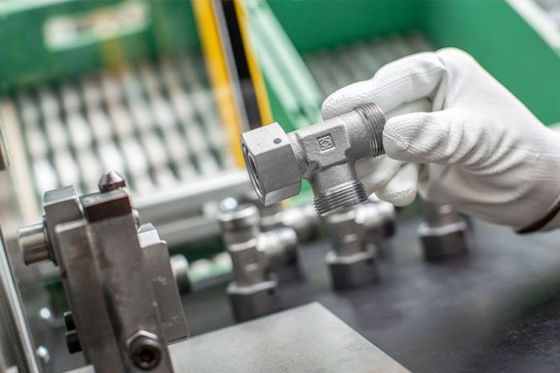What are the different desiccant materials available?
Episode 5 of the STAUFF Miniseries "Is Your Hydraulic System Breathing Properly?"
By combining two desiccants, STAUFF air breather dryers cover the entire spectrum of potential moisture in the air. How that works? See for yourself:
Did you know: You can turn on subtitles by clicking the CC button at the bottom of the video.
Watch this and all other episodes of this STAUFF Minseries on Youtube instead.
Which material is contained in the STAUFF air breather dryers?
The desiccant in all series of the STAUFF air breather dryers is a mixture of approx. 25 % silica gel and 75 % molecular sieve. The two materials are three-dimensional, highly active gel beads that effectively bind the water, drying the air flowing into the hydraulic reservoir.
Silica gel is a porous and amorphous form of silicone dioxide – a solid – with a large internal surface. It is used as a filter, adsorption material and desiccant because of its strong hygroscopic (water-attracting) action.
A molecular sieve is a natural or synthetic zeolite that is available in different pore diameters. The diameter determines the size of the molecules the material can absorb. Molecular sieves are used, for example, for separating substances and for drying gases, solvents, alcohol or natural gas.
By combining both desiccants, STAUFF air breather dryers cover the entire spectrum of potential moisture in the air: Molecular sieves can bind even very low levels of moisture, while silica gel absorbs higher moisture levels from approx. 45 %.
STAUFF air breather dryers are designed for different areas of application and differ in the structure of the assemblies – from lightweight (single use) variants to particularly robust models for extreme operating conditions with many options and replaceable elements.
The water absorption capacity, on the other hand, is identical throughout all series.
Do you already use air breather dryers in hydraulic systems?
Then share your experiences and leave a comment below this post.

Newsletter Subscription
Receive automatic e-mail notifications about new posts on the STAUFF Blog






